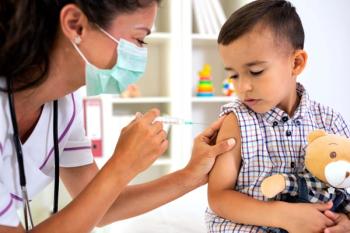
Sex Differences in Glycemic Measures Seen Following Exercise in T1D
Findings of a small study conducted in Brazil indicate exercise prescribed to patients with type 1 diabetes (T1D) may need to be tailored based on sex.
Providers may want to consider sex-specific recommendations when prescribing exercise to patients with
As T1D can lead to cardiovascular complications when patients experience increased glycemic levels, insulin application, healthy eating, and a physically active lifestyle are all important factors in patients’ care journey.
For patients with T1D, physical activity should be performed for 30 minutes daily (≥ 5 times/week; moderate-vigorous intensity), researchers explained, adding a single session could change glycemic (reducing glucose levels without causing hypoglycemia) and cardiovascular (reducing exaggerated resting heart rate and systolic blood pressure) parameters.
However, sex-related differences including chromosomes, steroid hormones, and epigenetic modification can play a role in metabolism functionality, and it remains unknown if these differences influence blood glucose responses during and after aerobic and strength exercises.
To address this knowledge gap, investigators assessed sex-related glycemic, cardiovascular, and enjoyment responses after intensity- and duration-matched (moderate intensity for 30 minutes) aerobic and strength exercise sessions among individuals with T1D.
Researchers compared 3 exercise sessions—aerobic versus 2 strength exercise designs at rest (PRE), immediately after session (POST-0), and 20 minutes after session (POST-20)—for cardiovascular and glycemic outcomes.
A total of 12 individuals (7 male) in Brazil underwent anthropometric and body composition measurements and completed a cardiorespiratory fitness test.
Analyses revealed:
- Men showed reduced blood glucose levels (POST-0 and POST-20), besides presenting lower values than women in both time points after aerobic exercise.
- Blood glucose was reduced POST-0 (Strength exercise A [SEA] and Strength exercise B [SEB]) and POST-20 (SEA) in men, and POST-0 and POST-20 min (SEA) in women compared with PRE levels (effect size was moderate, large or very large), without causing hypoglycemic episodes.
- No differences between sexes were seen concerning strength sessions.
- Cardiovascular parameters and enjoyment levels were similar between exercise sessions.
- Because women rely on lipid oxidation which spares plasma glucose more so than men, this greater use of lipids as fuel may have accounted for differences measured, authors wrote. In comparison, “men exhibit greater carbohydrate oxidation than women during [aerobic exercise] at the same relative exercise intensity,” they added.
The study’s small sample size, in addition to the lack of data regarding hormone levels, diet, and absolute insulin dose before and after exercise, mark limitations to the analysis.
“To the best of our knowledge, this study is the first to compare sex-related glycemic, cardiovascular, and enjoyment responses after intensity- and duration-matched aerobic and strength exercise sessions in T1D patients,” researchers said.
“We recommend that the prescription of exercise for men and woman be different, with woman needing more volume or intensity of aerobic exercise training to promote greater lowering in BG than men,” while prescription of strength training can be equal, they concluded.
Reference
Carvalho LPC, Oliveira LS, Farinha JB, Souza SSN, and Gomes JLB. Sex-related glycemic changes after intensity- and duration-matched aerobic and strength exercise sessions in type 1 diabetes: a randomized cross-sectional study. J Bodyw Mov Ther. Published online August 6, 2021. doi:10.1016/j.jbmt.2021.07.028
Newsletter
Stay ahead of policy, cost, and value—subscribe to AJMC for expert insights at the intersection of clinical care and health economics.













































